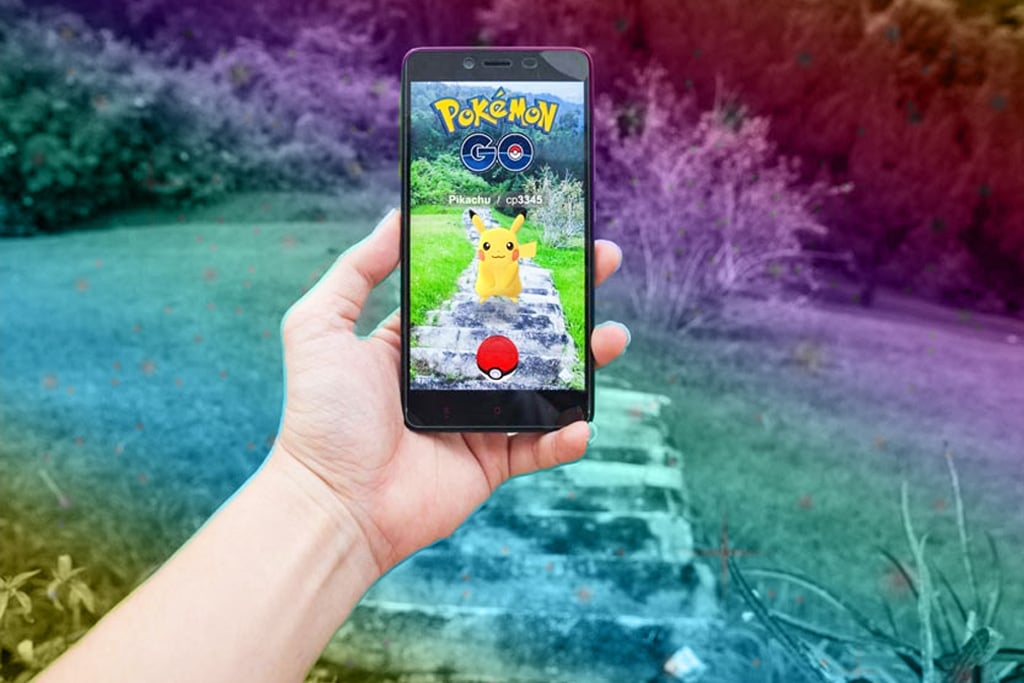By: Monica Molouf
 Image source: https://junkee.com/pokemon-go-still-thriving/196317
Image source: https://junkee.com/pokemon-go-still-thriving/196317
Pokémon Go experienced a recent financial setback[1] due to a class action settlement in California federal court. In settling trespass and nuisance charges, the court ordered the company behind Pokémon Go to pay four million dollars in attorney’s fees and one thousand dollars to each individual plaintiff. [2] Additionally, the court ordered the company to urge individuals to refrain from acts of trespass while using the app.[3]
This comes after numerous complaints that the app encourages trespass on private property.[4] In their complaint for In re Pokémon Go, plaintiffs claimed Pokémon Go should be held responsible for “profiting from a game that encourages users to illegally wander onto private property.”[5] Defendants argued that they were not responsible for individual user’s actions, but the federal court disagreed.
The sell for downloading the smartphone app is that “the world of Pokémon is all around you.”[6] Meaning if you look through the proper lens—say, an app on my smartphone—you, too, could be Ash[7] and capture Pokémon as a trainer.
There’s something exciting about integrating a fantasy world into everyday life via virtual reality. As the world’s “leading augmented reality” software company,[8] Niantic Inc. has capitalized on this excitement through Pokémon Go. The app combines the fictional world originally experienced through trading cards and television shows with the real world, creating a quasi-virtual reality where Pokémon wander the earth.[9] As pointed out in a response filed by plaintiffs, “[t]his innovative blending of physical and virtual worlds is the defining feature of Pokémon Go and the key to its popularity. Niantic emphasizes this heavily in its advertising, encouraging players to search far and wide to capture Pokémon and advance in the game.”[10]
The promotional video for Pokémon Go depicts 3D cartoons of the famous creatures roaming real cities, forests, and other exciting terrains.[11] These are ambiguous spaces—never a distinct place in a familiar city, a backyard, or even a local park. The video portrays beautiful scenery to match the fantastical virtual reality. While moving through these frames, a disclaimer subtly flashes across the screen,[12] urging users to be careful and remain aware of their surroundings.[13] And while it promotes players to see Pokémon wherever they go, the app fails to show the full scope of where these creatures roam, and where users should not. This is particularly interesting after the aforementioned settlement reached in August of this year.
Neither the video nor the Apple App Store description of includes any disclaimer or clause to encourage users against trespassing private property. While the settlement is still fresh, it would behoove Pokémon Go to include such a disclaimer. And fast. Clearly, Niantic, Inc. is not forcing users to enter onto personal property. Those who download the app seem to use at their own initiative…and their own risk. But there is something to be said about creating an app that entices strangers to trespass on private property in pursuit of a virtual creature.
As a child of the 90s, I understand the temptation to open an app on my smartphone and tramps around my neighborhood in search of Pikachu. The temptation to become a Pokémon trainer for a short while. However, inspiring individuals to intrude on private property brings up real public policy concerns.
Despite the settlement litigation, Pokémon Go seems to be increasing in popularity. Just this month I’ve seen packs of individuals zig-zagging the streets in my neighborhood, trying to catch them all. And while the settlement struck the company financially, it seems Niantic, Inc. will continue to push the seal as an augmented reality pioneer and millennials will continue to revel in nostalgia. Public policy and privacy rights may be of substantial social interest, but so it seems is reliving one’s childhood.
[1] See generally, Paul Tassi, ‘Pokémon GO’ Has Made $1.8 Billion As It Turns Two Years Old, Forbes (Jul. 9, 2018, 9:38 AM) https://www.forbes.com/sites/insertcoin/2018/07/09/pokemon-go-has-made-1-8-billion-as-it-turns-two-years-old/#283e74094655 (illustrating that the company racked in almost two billion dollars in revenue in its first two years).
[2] Hannah Albarazi, Pokémon Go Nuisance Deal Netz Pomerantz $4M In Atty Fees, Law360 (Aug. 22, 2019, 5:51 PM) https://www.law360.com/articles/1191631.
[3] See id.
[4] See Allison Grande, Pokémon Go Responsible for Individual Players’ Actions and Had Done Nothing Wrong, Law360 (Jan. 30, 2017, 7:57 PM) https://www.law360.com/articles/886257?copied=1.
[5] See id.; see also Allison Grande, ‘Pokémon Go’ Maker Encouraged Trespassing, Court Told, Law360 (Mar. 3, 2017, 8:06 PM) https://www.law360.com/articles/898098 (referencing the previous article and summarizing the case).
[6] Amazing Creatures Have Been Discovered Across the Planet!, YouTube (Feb. 1, 2018) https://www.youtube.com/watch?v=eMobkagZu64.
[7] Ash is the main character and trainer in the anime television series, Pokémon. Ash Ketchum, Bulbapedia (last visited Sept. 12, 2019) https://bulbapedia.bulbagarden.net/wiki/Ash_Ketchum.
[8] About: A History of Viewing the World Differently, Niantic (last visited Sept. 12, 2019) https://nianticlabs.com/about/.
[9] Explained: What is Pokémon Go?, WebWise (last visited Sept. 12, 2019) https://www.webwise.ie/parents/pokemon-go/.
[10] Plaintiff’s Opposition to Defendant’s Motion to Dismiss, at 21–23, In Re Pokémon Go Nuisance Litigation (N.D. Cal. 2017) (No. 3:16-cv-04300-JD).
[11] Supra, note 5.
[12] Id.
[13] Pokémon Go Safety Tips, PokémonGo (last visited Sept. 12, 2019) https://www.pokemongo.com/en-us/. The website itself provides a list of safety tips discussing the use of care while using the app. While it mentions inaccessible places, it uses construction cites rather than private property as an example. And nowhere does the term “trespass” appear.
